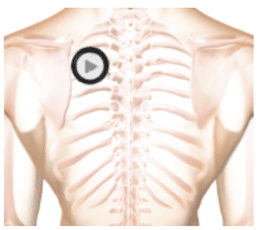Wheeze Auscultation Lesson with Recordings
Virtual Auscultation


The patient's position is seated.
Lesson
Wheezes are adventitious lung sounds that are continuous with a musical quality. Wheezes can be high or low-pitched. High-pitched wheezes may have an auscultation sound similar to squeaking. Lower pitched wheezes have a snoring or moaning quality. The proportion of the respiratory cycle occupied by the wheeze roughly corresponds to the degree of airway obstruction. Wheezes are caused by narrowing of the airways.Waveform
Authors and Sources
Authors and Reviewers
-
Heart sounds by Dr. Jonathan Keroes, MD and David Lieberman, Developer, Virtual Cardiac Patient.
- Lung sounds by Diane Wrigley, PA
- Respiratory cases: William French
-
David Lieberman, Audio Engineering
-
Heart sounds mentorship by W. Proctor Harvey, MD
- Special thanks for the medical mentorship of Dr. Raymond Murphy
- Reviewed by Dr. Barbara Erickson, PhD, RN, CCRN.
-
Last Update: 12/11/2022
Sources
-
Heart and Lung Sounds Reference Library
Diane S. Wrigley
Publisher: PESI -
Impact Patient Care: Key Physical Assessment Strategies and the Underlying Pathophysiology
Diane S Wrigley & Rosale Lobo - Practical Clinical Skills: Lung Sounds
- Essential Lung Sounds
Diane S. Wrigley, PA-C
Published by MedEdu LLC - PESI Faculty - Diane S Wrigley
-
Case Profiles in Respiratory Care 3rd Ed, 2019
William A.French
Published by Delmar Cengage - Essential Lung Sounds
by William A. French
Published by Cengage Learning, 2011 - Understanding Lung Sounds
Steven Lehrer, MD
- Clinical Heart Disease
W Proctor Harvey, MD
Clinical Heart Disease
Laennec Publishing; 1st edition (January 1, 2009)